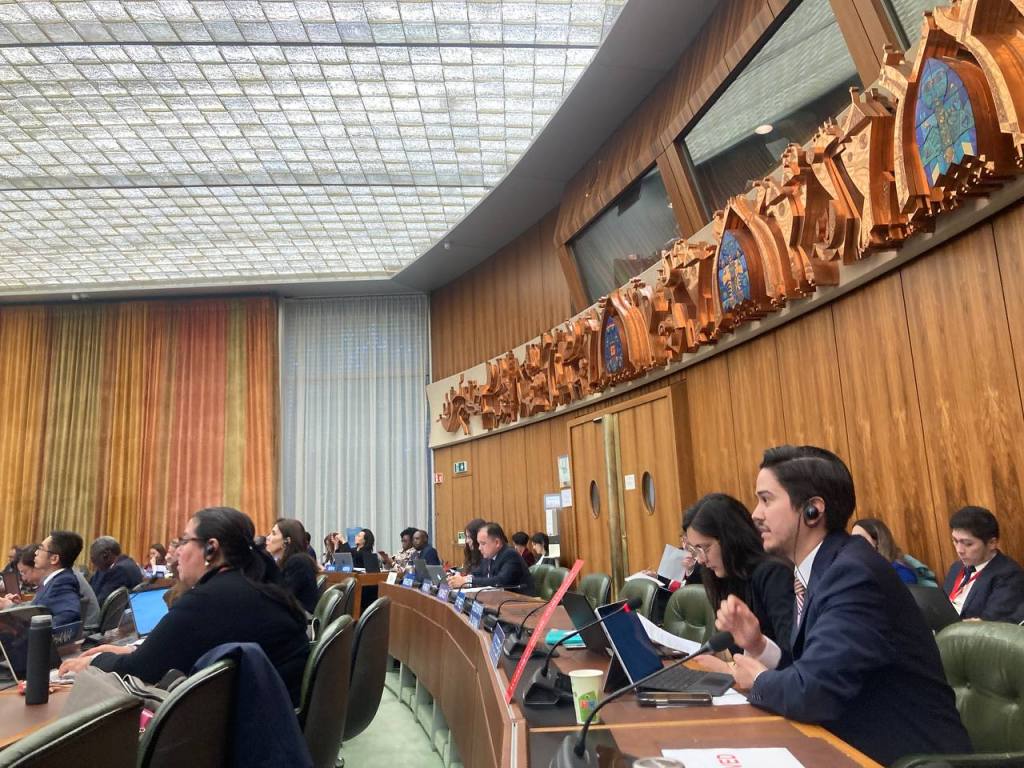Progress update half way through the two week Diplomatic Conference to conclude an International Legal Instrument Relating to Intellectual Property, Genetic Resources and Traditional Knowledge Associated with Genetic Resources – May 2024
The final negotiations on the proposed treaty relating to intellectual property, genetic resources, and traditional knowledge associated with genetic resources kicked off on last week at the World Intellectual Property Organisation’s (WIPO) office in Geneva. I’m one of the over 1,200 delegates registered for this intensive 12-day diplomatic conference.
This meeting is the culmination of a 25-year journey, ever since the WIPO Intergovernmental Committee on Intellectual Property and Genetic Resources, Traditional Knowledge and Folklore was established back in 2000. It’s notable because, according to WIPO, the last negotiations of this scale and magnitude occurred almost three decades ago. The director general, Daren Tang, opened the meeting with a call to action, urging us all to “thread the needle” during the upcoming two weeks. Guilherme de Aguiar Patriota, Ambassador and Permanent Representative of Brazil to the World Trade Organization and other Economic Organizations in Geneva, was elected as President of the Conference.
The treaty we are working on aims to enhance the efficacy, transparency, and quality of the patent system concerning genetic resources and associated traditional knowledge, and to prevent patents from being granted for inventions that are not genuinely novel or inventive, especially when they rely on Indigenous organisms and traditional knowledge. The ‘basic document’ under discussion is a text that was drafted in September 2023, based on wording provided in 2019 by a former Chair of the Intergovernmental Committee who had grown frustrated after nearly 20 years of slow progress. Applicants under the proposed treaty will need to disclose information about source of any genetic resources (GR) their ‘invention’ is based on, and also any associated traditional knowledge connected to the GR.
I was lucky to be invited to join the delegation organised by FDM (Forum Drugs Mediterranean), an international non-profit, non-partisan, and non-governmental research and advocacy organisation, with roots in the Mediterranean basin. FDM’s work focuses on people and policies in relation with drugs that have traditional ties with the Mediterranean region but they include global drug issues along with Indigenous rights and traditional knowledge protections – especially relating to Cannabis and other psychedelic plants and fungi. I had applied under Aotearoa Indigenous Rights Trust, an organisation established more than 20 years ago by Māori rights activists working at the United Nations on the precursor to the UN Declaration on the Rights of Indigenous Peoples. We missed the application deadline, so rather than take the risk of not being accepted as a late entry on Day One of the conference, my friends at FDM, and the Cannabis Embassy, that I have been working with for a few years, generously agreed to include me in their delegation.
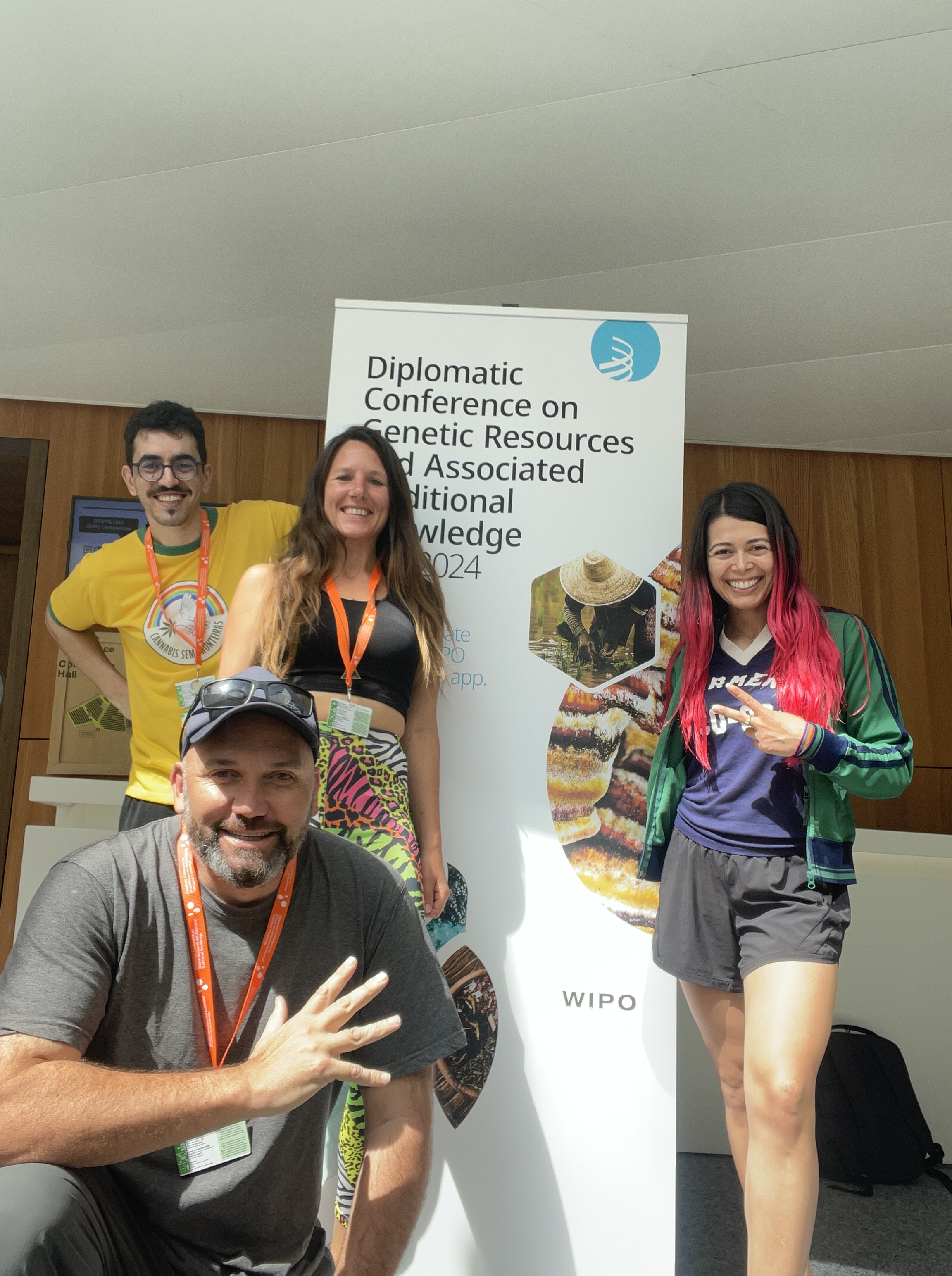
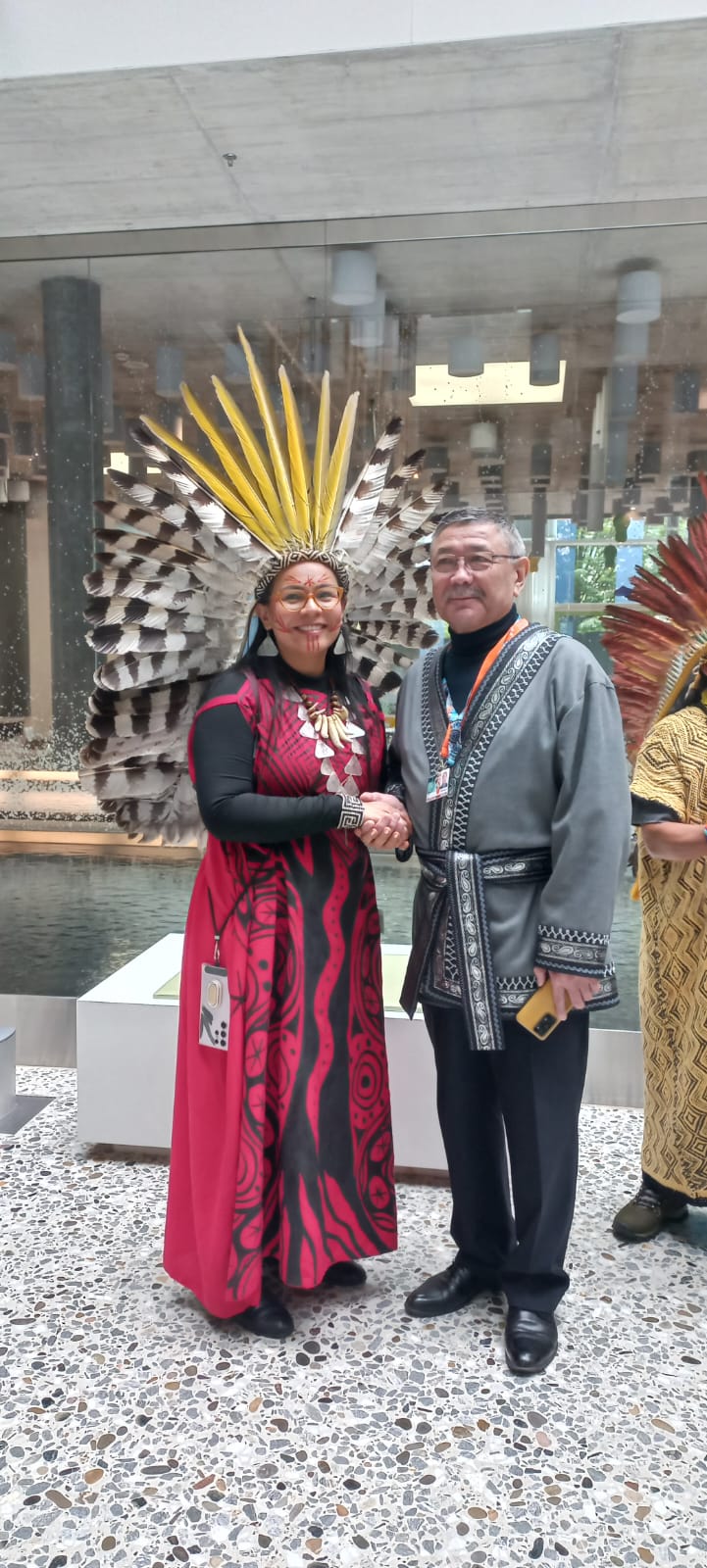
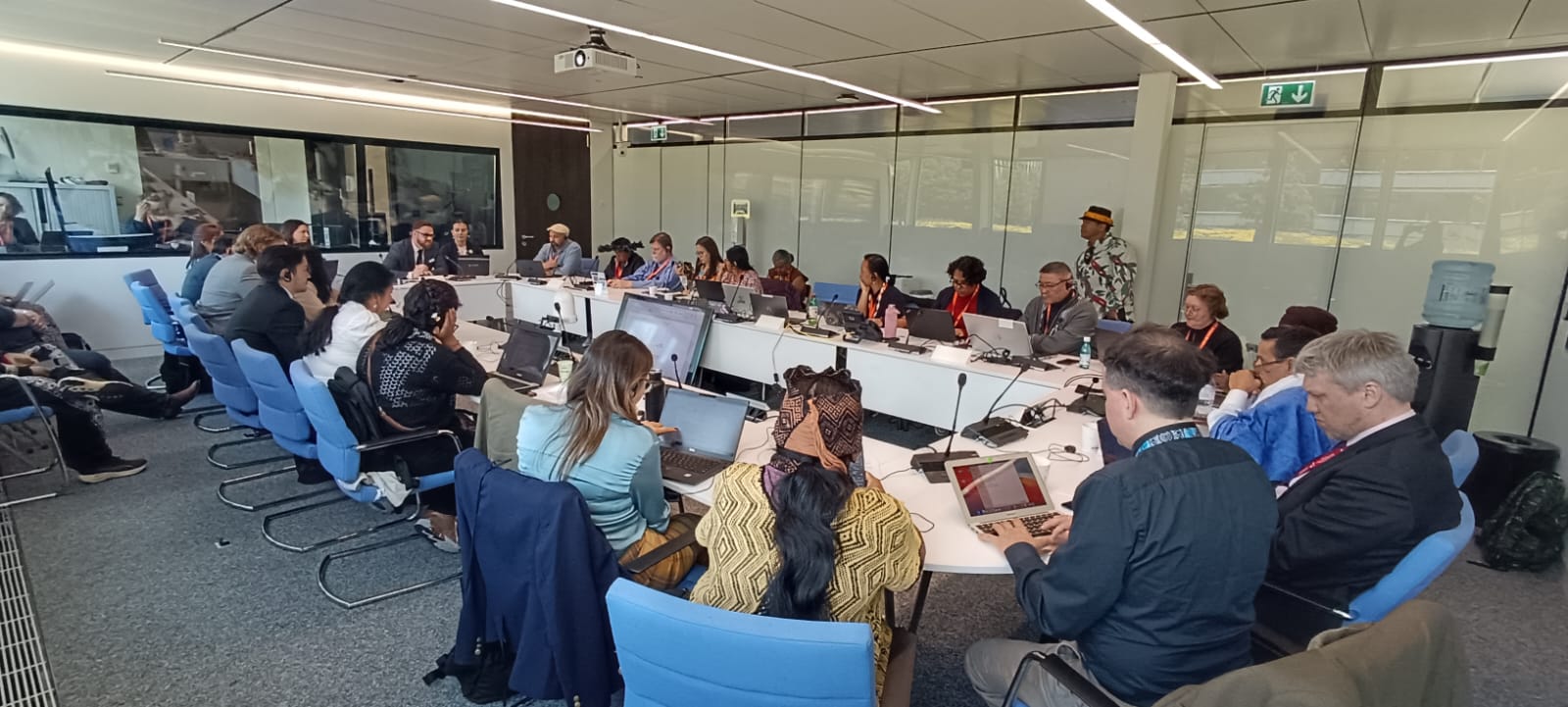
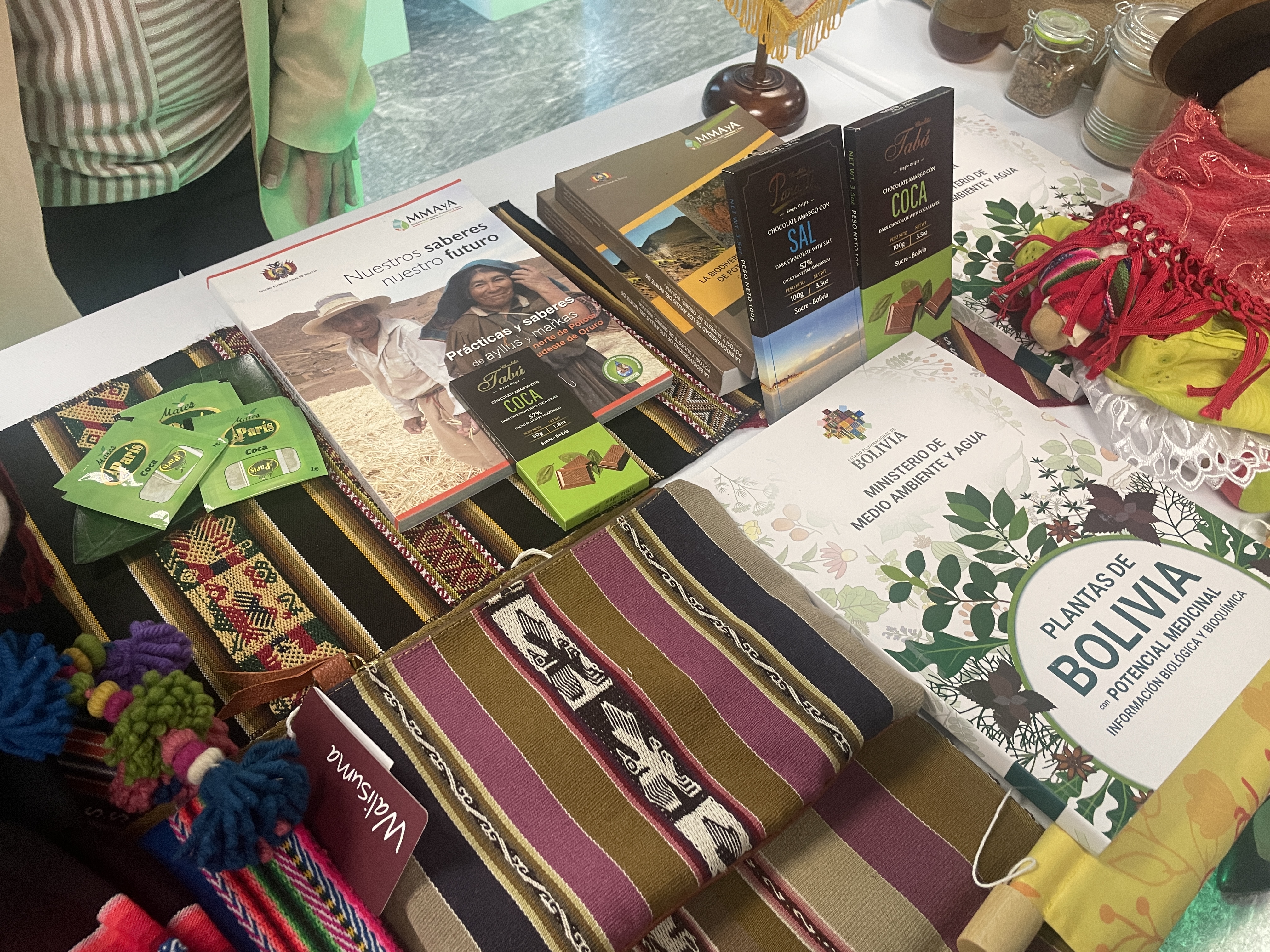
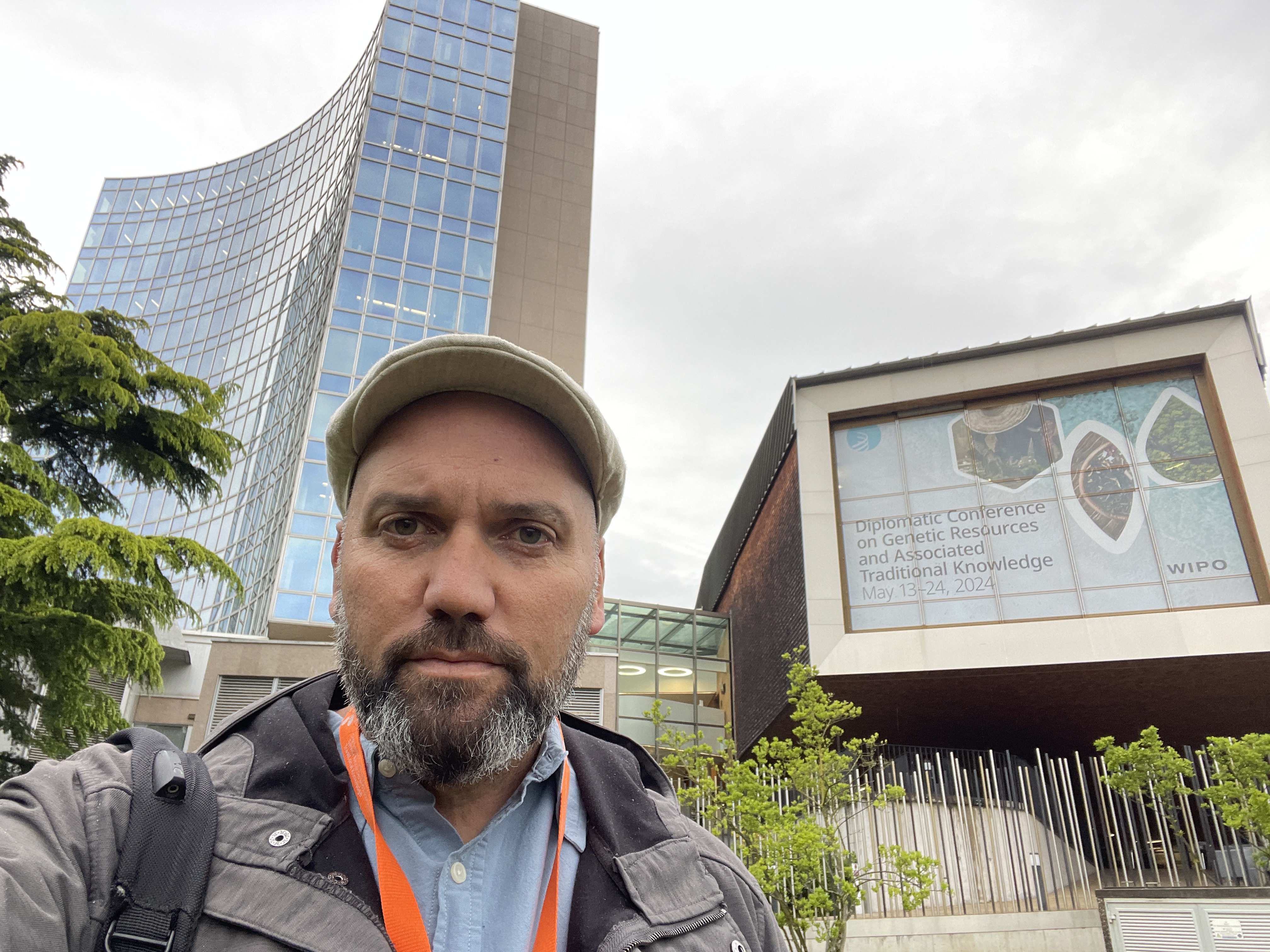
Early in the first week the process was split into two groups. The first committee is focused on all substantive intellectual property provisions and will recommend them for adoption by the plenary. The second committee is handling all administrative and procedural issues for the new instrument. Main Committee I is chaired by Jodie McAlister from Australia, with Main Committee II chaired by Vivienne Katjiuongua from Namibia. Once the treaty wording is finalised, it will be sent to the conference plenary for adoption, hopefully on Friday 24 May, after which it will be open for signature.
In September 2023, a preliminary meeting was held in the same venue where legal experts pointed out that the draft text failed to address the issue of biopiracy of genetic resources and associated traditional knowledge using patents. This omission is because the text excludes all provisions, such as those concerning biopiracy, that are already addressed by other international instruments like the Nagoya Protocol of the Convention on Biological Diversity, the International Treaty on Plant Genetic Resources for Food and Agriculture, and the UN Declaration on the Rights of Indigenous Peoples. Additionally, the treaty leaves Digital Sequence Information out of its scope. Both of these are major concerns for the Indigenous Caucus that I am part of, and the only Māori member.
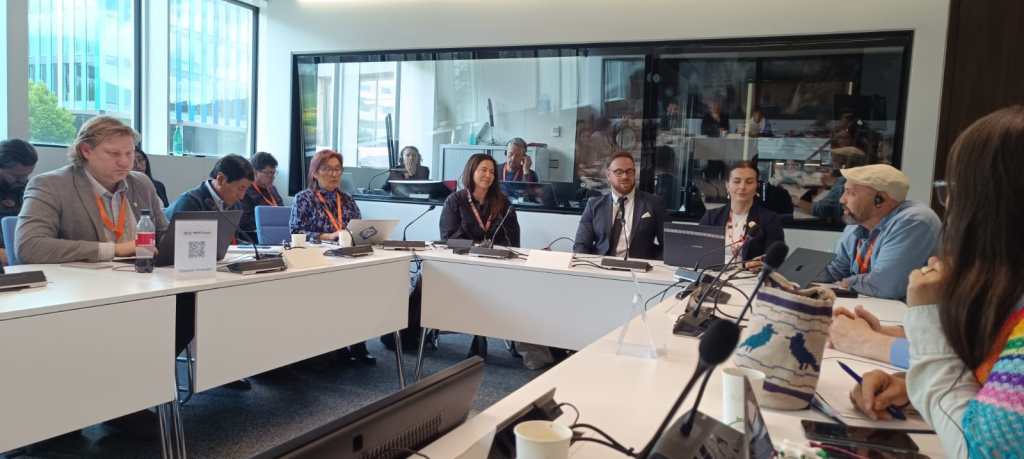
The New Zealand government delegation are officials from Te Puni Kōkiri, the Ministry for Māori Development, and the team includes three officials, two who are themselves Māori and Moriori. Interventions (input) from the New Zealand delegation has been welcomed by the Indigenous Caucus, though the mandate from the new coalition Government seems to be a lot more restricted than it likely would have been had Nanaia Mahuta still been the Minister of Foreign Affairs and Trade. Let’s hope Tama Pōtaka can get up to speed quickly on the issues at stake for Māori and Aotearoa as a whole so we can see some real leadership from the Government on Indigenous rights, even as the two minor coalition partners work hard to undermine Te Tiriti o Waitangi provisions in existing legislation and constitutional arrangements.
The biggest disappointments so far in negotiations are things like insistence that this Treaty is merely a transparency mechanism and not an instrument to establish any new rights or event to protect genetic resources and associated traditional knowledge. Many countries don’t want to acknowledge Indigenous peoples exist within their borders, let alone have rights to the utilisation of indigenous organisms. Free, Prior and Informed Consent cannot be mentioned as it implies Indigenous peoples may have some legitimate ownership claims, likewise Access and Benefit Sharing is also a ‘no go’ area for a handful of countries that actively oppose any efforts for the instrument to give effect to the rights of Indigenous Peoples and Local Communities (IPLCs).
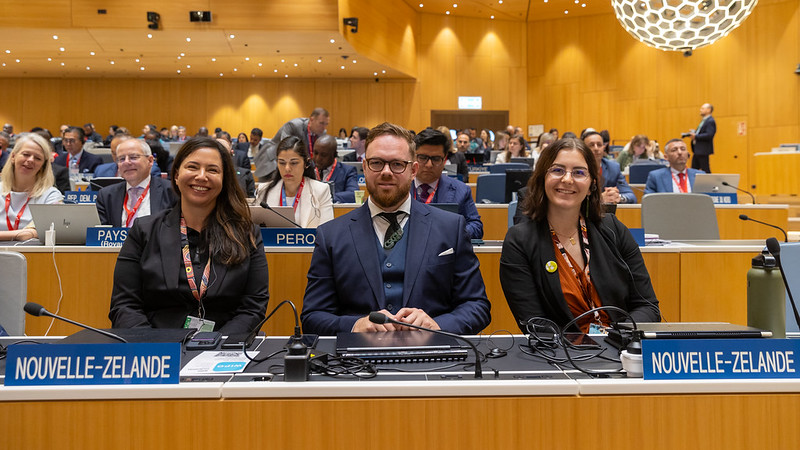
During the first week of discussions, the United States, Japan, EU, UK and South Korea strongly opposed any mandatory disclosure requirements and resisted proposals for strong sanctions on patent owners for non-compliance. The delegations really seem only interested in protecting the interests of multinational pharmaceutical companies – not Indigenous peoples within their own countries let alone elsewhere. Canada, Israel and Hungary are closely aligned with that group – while New Zealand, Australia and Turkey are part of the same ‘Group B’, but do not toe the line and are often at odds with the other delegations in their group.
Some of outstanding issues remaining include:
- the trigger definition – under what situation would a patent applicant be required to disclose the claimed invention was based on genetic resources and/or associated traditional knowledge
- sanctions and penalties – under what conditions could sanctions be applied and in what, if any, cases could the patent be revoked
- reference to the UN Declaration on the Rights of Indigenous Peoples
- reference to Digital Sequence Information
- a definition of Traditional Knowledge
- whether assessments and rules should be developed in ‘conjunction with’ or just following ‘consultation with’ IPLCs
- whether any ‘stakeholders’ beyond IPLCs hold any legitimate rights that warrant their involvement
One of the major challenges in our negotiations is the lack of a clear definition for ‘traditional knowledge,’ making it easy to bypass rules. India has proposed a definition, stating that: ‘Traditional Knowledge associated with Genetic Resources’ means any knowledge which is evolving, generated in a traditional context, whether documented or not, collectively preserved, and transmitted from generation to generation, including but not limited to know-how, skills, innovations, practices, and learning, that are associated with genetic resources.
Over the next four days, delegates will engage in intense negotiations to hopefully expand the scope and ensure there is sufficient policy space for countries to maintain their current stronger disclosure requirements under domestic biopiracy and patents legislation. The process gets truncated from now on with a much smaller group of representatives, including a rotating member of the Indigenous Caucus, participating in informal negotiations before wording is brought back to the two committees and then to a legal drafting group and into the final plenary session by Friday.
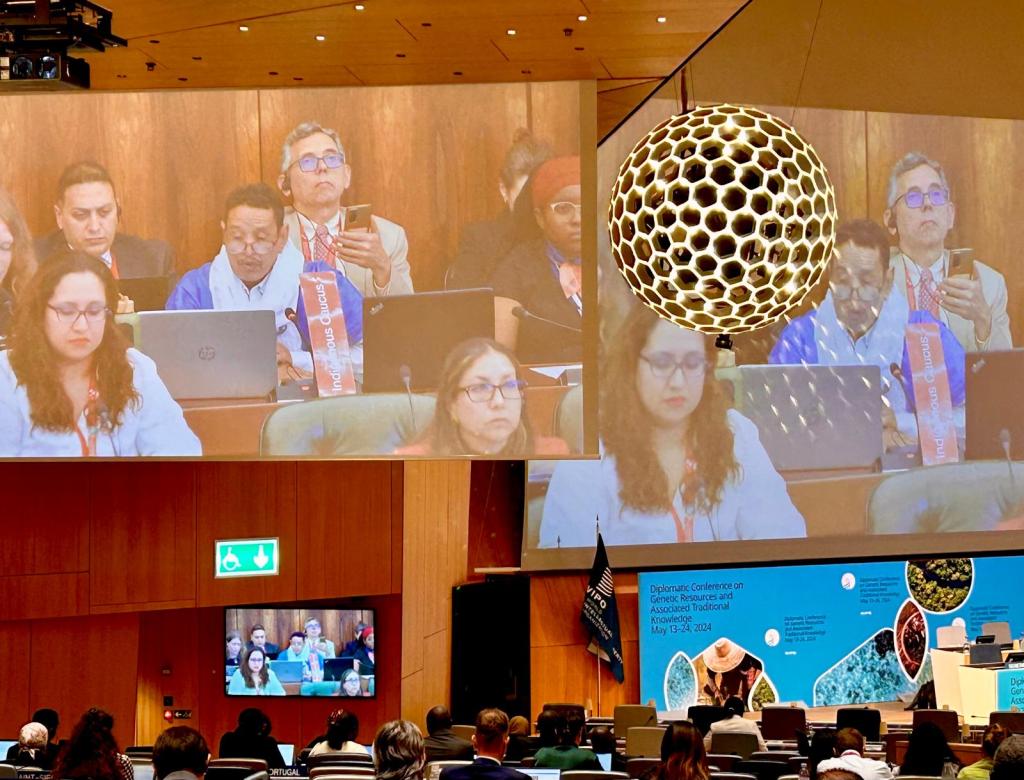
It’s an intense and historic time here in Geneva, and I’m hopeful that through our combined efforts, we will reach a consensus that goes some way to providing greater protections to the rights of Indigenous peoples, genetic resources and associated traditional knowledge. The big goal at this event is to get enough consensus to get a Treaty in place, the second is to ensure it has sufficient flexibility to be greatly strengthened when it is reviewed, likely in four years time.
